Digital Poster
Artifacts Mitigation & Correction
ISMRM & ISMRT Annual Meeting & Exhibition • 10-15 May 2025 • Honolulu, Hawai'i

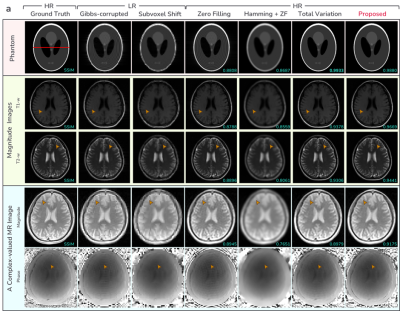 |
Computer Number: 17
3360. Ringing
Artifact Removal Using Zero-Shot Deep Anti-Aliasing Prior in MR
image
C. Cui, S-H Lee, J-Y Kim, J. Yi, D-W Kim, K-J Jung, D-H Kim
Yonsei University, Seoul, Korea, Republic of
Impact: This work proposed a deep anti-aliasing prior to
remove the ringing artifacts from various sources in a
zero-shot manner.
|
|
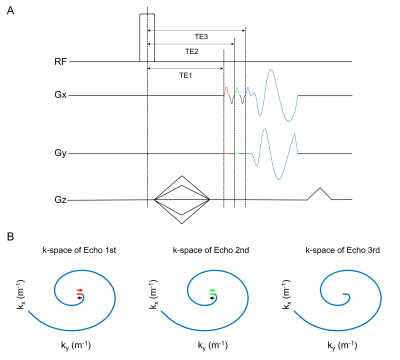 |
Computer Number: 18
3361. Single
breath-hold lung T2* mapping using multi-echo 3D spiral UTE with
tight interval δTE
J. Zhao, Y. Cao, W. Liu, Q. Zeng, S. Wang, H. Wang, W. Tang,
D. Han
CAS Center for Excellence in Nanoscience, National Center for Nanoscience and Technology, Beijing, China
Impact: Our proposed method enables single breath-hold
lung T2* quantification
with a 0.57 ms echo interval and 2 mm in-plane resolution.
Rapid and accurate T2* assessment
in the lungs is crucial for evaluating structural and
functional changes caused by lung diseases.
|
|
 |
Computer Number: 19
3362. Impact
of Segmentation Errors on QSM-based Brain Iron Estimation
F. Salman, N. Bergsland, M. Dwyer, B. Weinstock-Guttman, R.
Zivadinov, F. Schweser
Buffalo Neuroimaging Analysis Center, Department of Neurology at the Jacobs School of Medicine and Biomedical Sciences, University at Buffalo, The State University of New York, Buffalo, United States
Impact: This study highlights that segmentation method
choice impacts clinical findings on iron pathology in MS,
underscoring the importance of accurate segmentation for
unbiased interpretation of neuroimaging data.
|
|
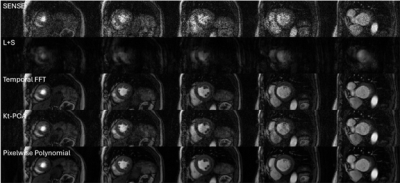 |
Computer Number: 20
3363. Pixelwise
Adaptive Polynomial Subspace Reconstruction for Accelerated CMR
Perfusion Imaging
S. Zhao, S. Liu, Q. Chen, X. Wang, M. Salerno
UCSF, San Francisco, United States
Impact: This pixelwise subspace approach enhances
various subspace-regularized reconstructions, with the
polynomial basis offering a versatile, predefined subspace
for numerous MRI applications.
|
|
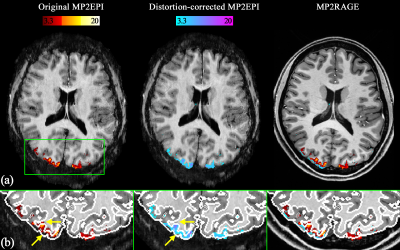 |
Computer Number: 21
3364. A
Novel Distortion-Matched Anatomical Imaging Technique for
High-Fidelity Functional Mapping onto a True-Brain Atlas
S. D. Yun, P. Pais-Roldán, J. Lee, N. J. Shah
Forschungszentrum Juelich, Juelich, Germany
Impact: The proposed MP2EPI scheme simultaneously
acquires both original and reverse phase-encoding EPI,
enabling effective distortion correction in
distortion-matched anatomical scans. Distortion-corrected
MP2EPI enhances functional mapping for submillimetre fMRI,
exhibiting greater alignment with the true-brain atlas, as
measured by MP2RAGE.
|
|
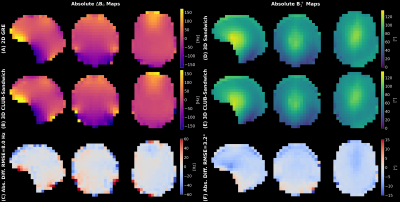 |
Computer Number: 22
3365. Combined
caLculation of Ultra-high field Biases (CLUB) with Sandwich:
fast, simultaneous estimation of 3D B0 and multi-channel B1+
maps for 7T MRI
N. Pato Montemayor, J. Philippe, J. Kent, A. Hess, A.
Klauser, E. Sleight, L. Bacha, T. Di Noto, B. Maréchal, P.
Liebig, J. Herrler, D. Nickel, R. Heidemann, J-P Tiran, T.
Kober, T. Hilbert, T. Yu, G. F. Piredda
Siemens Healthineers International AG, Lausanne, Switzerland
Impact: The proposed CLUB-Sandwich sequence enables
rapid, simultaneous ΔB0 and
B1+ mapping
at 7T without accuracy reduction, providing a faster method
for optimizing parallel transmission pulses, increasing
efficiency in ultra-high field MRI applications.
|
|
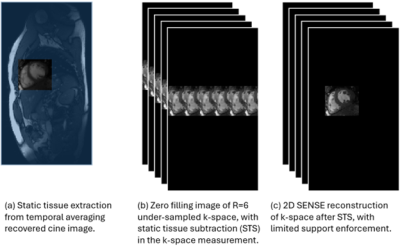 |
Computer Number: 23
3366. Outer-Volume
Suppressed Accelerated CMR via Static Tissue Subtraction
S. Zhao, S. Liu, Q. Chen, X. Wang, M. Salerno
UCSF, San Francisco, United States
Impact: This technique can be applied to other dynamic
CMR applications with a largely static FOV region. It
eliminates the need for outer volume suppression, enhancing
acquisition efficiency with a reduced FOV and supporting
higher acceleration rates in reconstruction.
|
|
 |
Computer Number: 24
3367. Simplex
Mesh Signal Representation for Modeling Susceptibility-Induced
Distortion
A. Toews, B. Hargreaves
Stanford University, Stanford, United States
Impact: A continuous piecewise linear signal
representation (simplex mesh) improves forward modeling
efficiency in the presence of background field gradients.
This work can help improve multi-readout distortion
correction methods for FSE near metal and EPI in the brain.
|
|
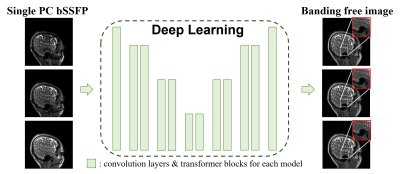 |
Computer Number: 25
3368. Deep
Learning Approaches for Banding Artifact Suppression in Single
Phase-Cycled bSSFP
H-R Choi, S-H Park
Korea Advanced Institute of Science and Technology(KAIST), Daejeon, Korea, Republic of
Impact: With only one phase-cycling data, deep learning
models, particularly Restormer, effectively suppress bSSFP
banding artifacts, resulting in high-quality,
artifact-suppressed images that maintain the speed and SNR
benefits of bSSFP, facilitating effective clinical judgments
and future research.
|
|
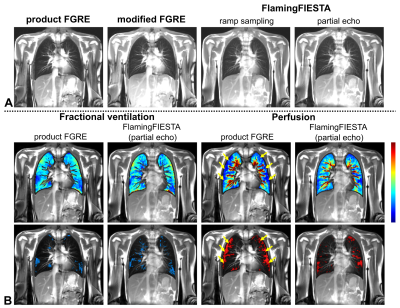 |
Computer Number: 26
3369. Ultra-short-TR
FlamingFIESTA enhances robustness of matrix-pencil functional
lung MRI in pediatric cystic fibrosis patients on 1.5T GE
systems
R. Heule, G. Bauman, A. De Silvestro, T. Sprenger, O.
Pusterla, H. Ryden, G. Raffler, S. Vogt, J. Usemann, J.
Geiger, A. Moeller, S. Skare, O. Bieri, C. Kellenberger, A.
van Niekerk
Center for MR Research, University Children's Hospital, Zurich, Switzerland
Impact: Ultra-short-TR FlamingFIESTA imaging
considerably improves image quality and consequently
functional outcome of matrix-pencil pulmonary MRI on 1.5T GE
systems. This constitutes a crucial step to expand access to
matrix-pencil MRI and provide a contrast agent-free
alternative for chronically ill patients.
|
|
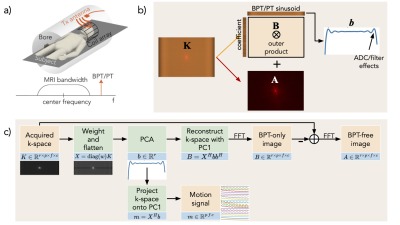 |
Computer Number: 27
3370. Unsupervised
Separation of (Multiple) Pilot Tone Signals From Images Using
Weighted PCA
R. Bhansali, S. Anand, P. Krahn, M. Lustig
UC Berkeley, Berkeley, United States
Impact: We present a simple unsupervised approach to
separate Pilot Tone signals from MRI data, offering a more
accurate representation of PT than Fourier-based methods. It
is general and works across scan settings to remove PT
leakage artifacts and enable motion-sensing.
|
|
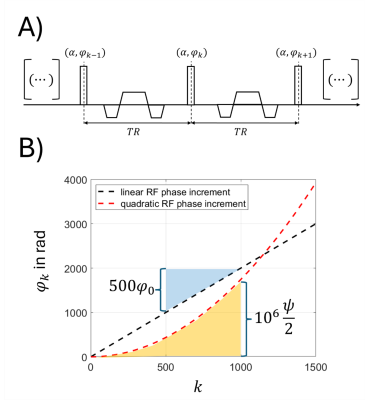 |
Computer Number: 28
3371. Frequency-modulated
bSSFP: A novel and time-efficient approach for multiparametric
mapping
N. Plähn, Y. Safarkhanlo, E. Pepper, B. Açikgöz, J.
Bastiaansen
Interventional and Pediatric Radiology (DIPR), Inselspital, Bern University Hospital, University of Bern, Bern, Switzerland
Impact: Using frequency-modulated bSSFP as an
alternative to phase-cycled bSSFP for biomarker
quantification introduces new opportunities to accelerate
the data acquisition. With steady-state preparation required
only once, scan time is reduced, and transient state
dead-time is minimized.
|
|
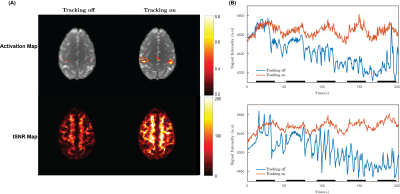 |
Computer Number: 29
3372. Real-time
Correction of Respiration-Induced B0 Fluctuations in Oscillating
Steady State fMRI using FID Navigators (FIDNavs)
M. Salifu, K. Wang, S. Huang, D. Noll
University of Michigan, Ann Arbor, United States
Impact: This study proposes a robust zeroth-order
(bulk) prospective correction method for OSSI, a
phase-cycled steady-state fMRI sequence. Our approach is
effective in reducing B0-induced
signal changes, allowing realization of theoretical SNR
gains in complex steady-state MRI sequences.
|
|
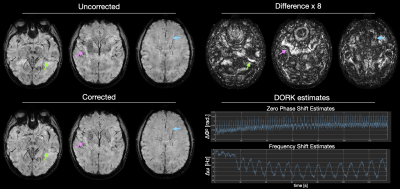 |
Computer Number: 30
3373. Dynamic
off-resonance correction in 3D-EPI using dual FID navigators
O. Norbeck, S. Skare, S. Schauman, H. Rydén, T. Sprenger, E.
Avventi, A. van Niekerk
Karolinska University Hospital , Stockholm, Sweden
Impact: This correction method enables artifact
reduction in 3D-EPI imaging, improving image quality for
studies affected by breathing-induced B0 fluctuations.
It offers potential for application in functional and
structural MRI, advancing the reliability of 3D-EPI
sequences for clinical and research use.
|
|
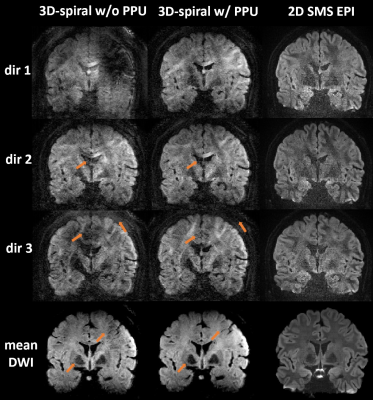 |
Computer Number: 31
3374. Do
second-order motion-compensation gradients and spiral sampling
suppress phase variations in DWI?
W. Zhong, Y. Jiang, H. Guo
Tsinghua University, Beijing, China
Impact: This study confirms the necessity of trigger in
motion-compensated stack of spiral, as whole-brain
single-slab DWI cannot be achieved without it.
|
|
 |
Computer Number: 32
3375. GABA-edited
7T spectroscopy using semi-adiabatic spatial-spectral pulses (GABA-SASSI)
improves sensitivity, SAR and water suppression
G. Verma, S. Rashid, P. Balchandani
Icahn School of Medicine at Mount Sinai, New York, United States
Impact: This pilot project demonstrates the
implementation and performance of the GABA SASSI sequence
for spectral editing with B1 insensitivity at 7T. The GABA
SASSI sequence offers faster performance and inherently
superior water suppression compared to MEGA PRESS.
|
The International Society for Magnetic Resonance in Medicine is accredited by the Accreditation Council for Continuing Medical Education to provide continuing medical education for physicians.